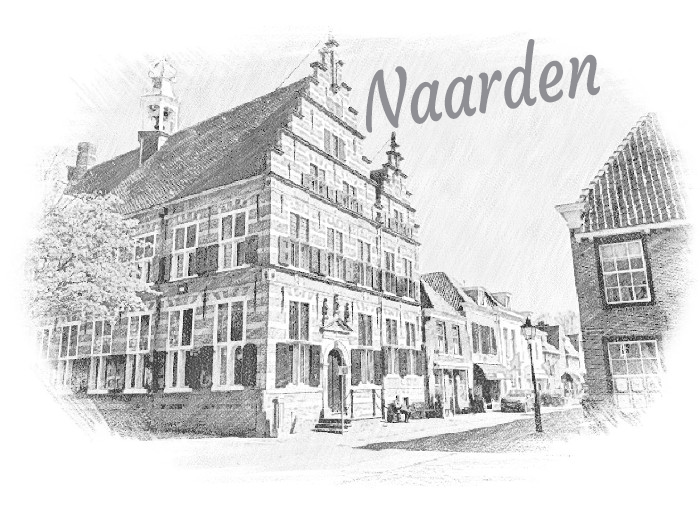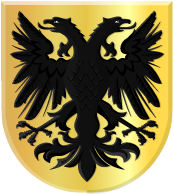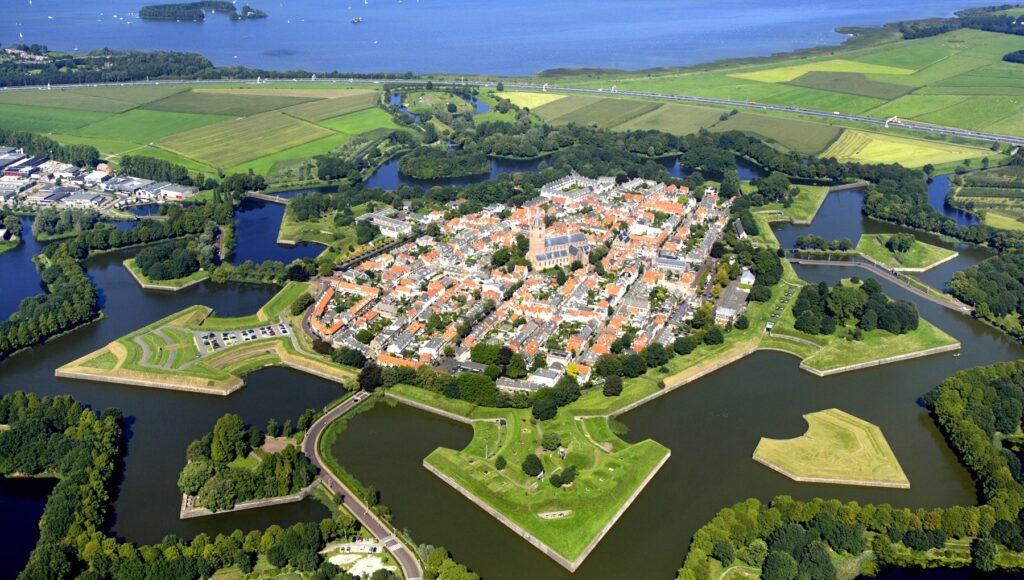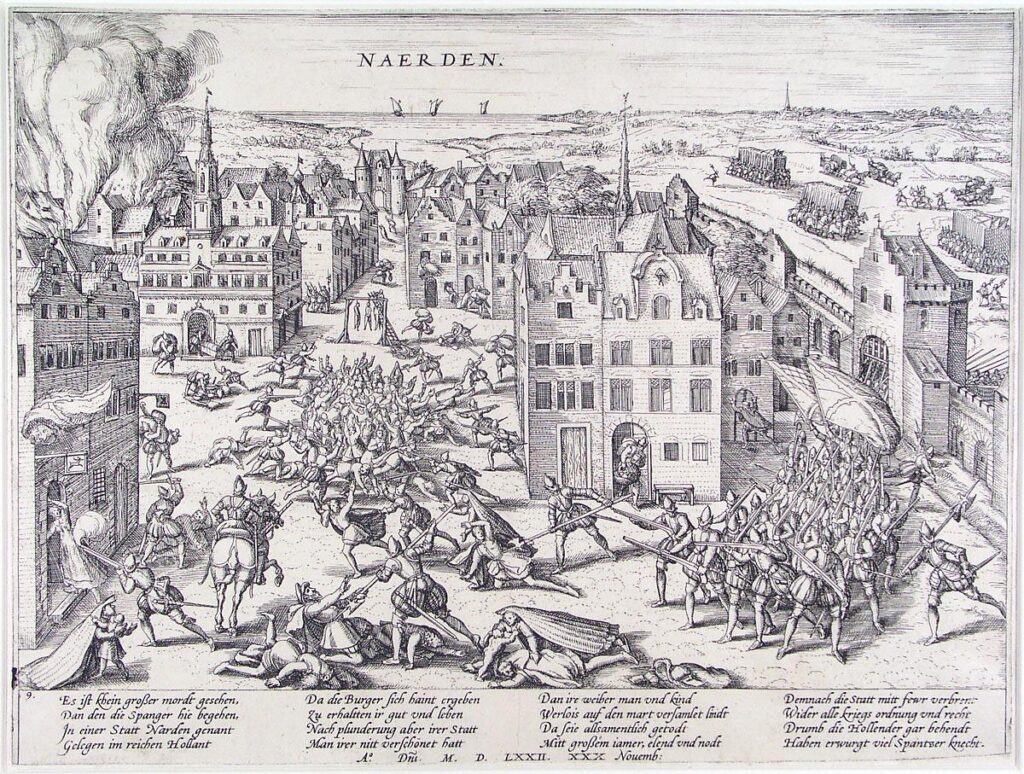
Dating back to the 14th century
With its well-preserved fortifications and charming streets, Naarden offers visitors a journey back in time.
The town’s most notable feature is its star-shaped fort, a marvel of military engineering dating back to the 17th century. This design not only showcases the defensive prowess of that era but also creates a unique and captivating layout that visitors can explore today. Naarden’s cobblestone streets and historic buildings, reminiscent of the Dutch Golden Age, further transport travelers to another era.
One of the town’s highlights is the Grote Kerk, a stunning church with an impressive interior featuring intricate woodwork and stained glass windows. The Vestingmuseum offers insights into Naarden’s military past, displaying weaponry, uniforms, and exhibits that narrate its rich history.
Beyond its historical significance, Naarden boasts a vibrant cultural scene. Art galleries, boutiques, and cozy cafes populate its streets, inviting visitors to engage with local artisans and savor the town’s relaxed ambiance.
Whether strolling through its fortress walls or enjoying a leisurely day of exploration, Naarden presents a captivating blend of history and modern charm. It stands as a living tableau, where the past and present harmonize to create an unforgettable experience for all who venture within its enchanting confines.

Casemates
The Casemates are a network of underground chambers and tunnels built into the walls of the fortification. These casemates were designed to provide shelter and defensive positions for soldiers during times of conflict. The term “casemate” typically refers to a fortified chamber or gun emplacement within a defensive structure.
The design of Naarden’s fortifications, including the Casemates, was influenced by the military architecture of the time. The star-shaped layout was intended to maximize defensive coverage, allowing soldiers to fire upon potential attackers from multiple angles. The town’s strategic location near Amsterdam made it an important defensive stronghold during various conflicts.
While the Casemates of Naarden are no longer actively used for military purposes, they remain an important historical site and a testament to the engineering and defensive strategies of the past. Visitors to Naarden can explore these underground chambers and learn about the town’s military history. Keep in mind that my knowledge is based on information available up until September 2021, so there might have been developments or changes since that time.

In the late sixties of the 16th century, the Revolt of the Netherlands against the rule of King Philip II of Spain began. The city council of Naarden was originally loyal to the landlord, but in August 1572 the city came into the hands of the beggars, with the support of part of the population. In response, royal forces besieged the city in November of that year.
The Spanish general Don Frederik, son of the Duke of Alba, was on his way to Naarden for a punitive campaign. From Amersfoort came the news that Don Frederik’s Spanish army was already ready to move into the Gooiland.
Mayor Maarten Laurentz and alderman Gerrit Pieter Aertszoon van Naarden went to Amersfoort on 29 November to negotiate. In the meantime, the government army had already advanced towards Bussum. The mayor and alderman were not allowed to join Don Frederik. They were ordered to return to Naarden to wait for an answer at the city gate. The mayor had given up. On the retreat they met Julian Romero halfway through Naarden-Bussum. The delegation from Naarden threw themselves at his feet and offered him the keys. Romero repeated three times and assured the delegation that civilians and occupation would not harm any life or property. Romero, however, failed to provide written proof of this, nor did the delegation ask for it. On November 30, the vanguard of the Spanish army had already come in front of Naarden, who had surrounded and enclosed the city from all sides in the afternoon.
MASSACRE OF NAARDEN
On December 1, Romero entered the city with 28 government soldiers. They were invited by Gerrit Pieter Aertszoon for a festive meal. Soon four hundred soldiers came in, their numbers growing steadily (to 5000) because the canals were frozen and the walls abandoned. These so-called Spaniards were received excellently by the Inhabitants of Negro. Romero invited the inhabitants to the Gasthuiskerk, the current Spanish House, at that time used as a town hall. About five hundred people had gathered there.
Then a priest came in and began to pray that those present had an hour to prepare for death. At that moment, the doors slammed open and Spanish musketeers appeared. They fired their muskets at the dense mass and beat down the remaining people with the sword and sword. Many of them had fled into the tower and rang the bell. The Spaniards mocked it and then set fire to the church tower, the victims, dead and alive, consumed to ashes. Within minutes, the Spaniards killed almost all the inhabitants, including Aertszoon, who had had dinner with the Spaniards just a little before. Then the Spaniards invaded the houses. Civilians were shot, their homes looted, residents were forced to take the loot to the Spanish camp, afterwards they were killed as a “thank you”. Spanish eyewitnesses reported that only the men were killed and the women and girls were not hurt.
People came to Naarden from the neighboring villages, the streets of Naarden were filled with traders to buy the loot. The marauding soldiers raped the women and girls. Then they set fire to the entire city, forcing hidden civilians to leave their hiding places. These civilians were murdered with daggers and meat axes. Those who resisted were tortured to death, surrounded by laughing soldiers. The victims had their blood drawn and drank it like wine. the teacher, humanist and historian Lambertus Hortensius had to witness the murder of his son, in which a Spanish soldier cut out his son’s heart and threw him in the face.
About a hundred civilians who still managed to escape through the snowy meadows still fell into Spanish hands, they were hung naked at their feet in trees to freeze to death. Civilians who had been taken in by local residents in the area were still killed by the Spaniards. Don Frederik then instituted a ban on pain of death to offer refugees shelter or food. A total of about sixty civilians are said to have escaped the massacre, twenty of whom were spared for ransom. About 800 died gruesomely.


Naarden received city rights in the 13th century and usually a city started making a seal. However, the oldest known seal of Naarden dates from 1543. This seal does show the double-headed eagle. This would be 100 years after the introduction of the double-headed German eagle. Emperor Sigismund was the emperor who introduced the double-headed imperial eagle.

Here’s what you might encounter during a stroll through Naarden:
Fortifications: Naarden is famous for its star-shaped fortifications, which date back to the 17th century. The city’s layout is designed in the shape of a star, which was a common defensive design during that era. The walls, bastions, and moats are remarkably well-preserved and offer a unique glimpse into the past.
Grote Kerk: The Great Church (Grote Kerk) is a prominent landmark in Naarden. This Gothic-style church features stunning stained glass windows and intricate architecture. The church’s interior is equally impressive, with its tall nave and impressive organ.
Markets and Shops: As you walk through the streets of Naarden, you’ll likely come across charming markets, boutique shops, and local galleries. The town’s small size creates an intimate atmosphere where you can explore at a leisurely pace.
Canals and Waterways: Naarden’s layout includes several canals and waterways, adding to its picturesque ambiance. Bridges, reflections in the water, and quaint houses along the water’s edge make for beautiful scenes.
Historic Houses: Many of the buildings in Naarden have retained their historic architecture, giving the town a unique character. The narrow streets are lined with well-preserved houses that showcase the traditional Dutch architectural style.
Vesting Museum: The Vesting Museum provides insights into the history of Naarden’s fortifications and the town itself. It’s a great place to learn more about the significance of the star-shaped defenses and the events that shaped the town.
Nature and Green Spaces: Naarden is surrounded by natural beauty, including the Naardermeer nature reserve. This wetland area is home to various bird species and offers walking paths where you can enjoy the tranquility of nature.
Cafes and Restaurants: There are plenty of cafes and restaurants in Naarden where you can take a break, enjoy local cuisine, and soak in the atmosphere. Dutch treats like stroopwafels, poffertjes, and herring might be on the menu.
Remember that Naarden is a relatively small town, so you can comfortably explore it on foot. The combination of historical charm, cultural richness, and natural beauty makes Naarden a delightful place to experience a leisurely stroll and immerse yourself in its unique ambiance













